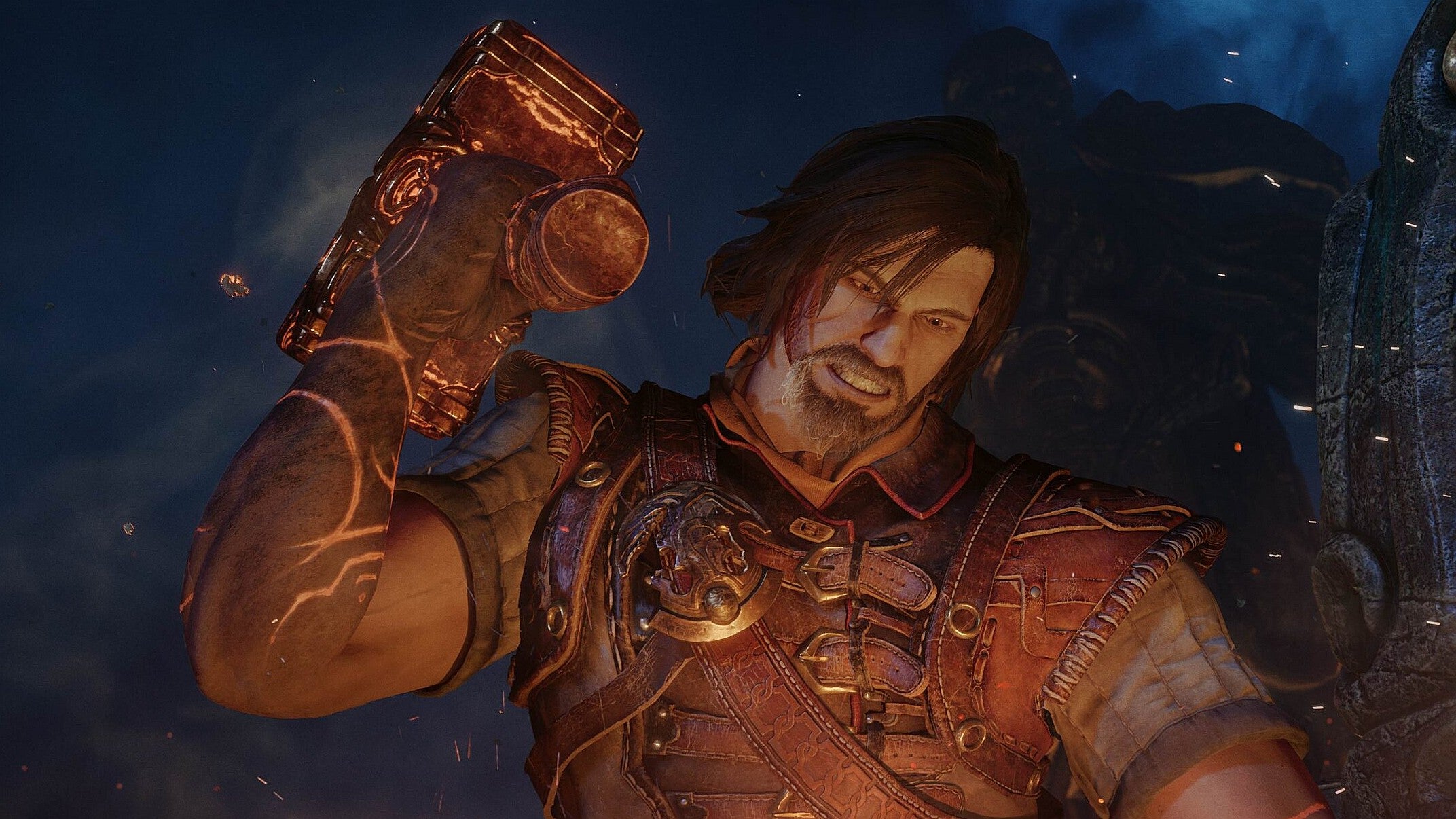Blades of Fire manages to feel original, lovable, and born of genuine passion, despite the near overwhelming number of problems that could have extinguished it.
Ever feel like you’re not where you should be? I had that feeling once. It was midnight on Halloween, on a deserted market street in Croydon. I looked up the street and froze as I saw a clown carrying a knife. My initial reaction was to stare and think, the confusion taking over the rational part of my brain that would have told me to move away from the clown as quickly as possible. Is that a real knife? Why is the clown just standing there? Do I go back down an even darker path to my flat or push on into a more central part of town? I was clueless, a bit scared, and desperate for someone to just provide some assistance. None came, so when the heir to Pennywise approached me I jogged up some steps into a throng of nightlife, and things just sort of worked out. I don’t know if the clown was up to no good or not (it was Halloween after all), but I often think about that moment and the feeling of simply not knowing what to do. I rarely knew what to do while starting out in Blades of Fire, and that was a big problem until I let myself get swept away by the adventure.
Blades of Fire reviewDeveloper: MercurySteamPublisher: 505 GamesPlatform: Played on PS5 ProAvailability: Out 22nd May on PC (Epic Games Store), PlayStation 5 and Xbox Series X|S
There’s nothing outwardly exciting about Blades of Fire, MercurySteam’s (Castlevania: Lords of Shadow, Metroid Dread) return to the “big muscular man fights through seemingly endless enemies across a large world” genre (that man being Aran, in this instance, and in a clear nod to Samus). Yes, this has soulslike leanings, without going full hog (die and you’ll lose your equipped weapon and be sent back to the last blacksmith’s anvil you used, the weapon left where you perished). It has a messy but encouraging-enough story, centred on a man who is sort of a magical blacksmith who forges weapons under the gaze of a demon/god-like creature inside another realm and must defeat the queen who has cast a spell turning steel into stone. And it’s full of all the different tiers of boss fights you would expect. But when you play it, Blades of Fire feels different, and I find that pretty exciting. Outside of a small amount of tutorialisation you’re pretty much just thrown in and told to figure stuff out – which caused some headaches.
My immediate reaction to the difficulty I had in the game’s first real area was one of confusion, with a bit of anger and a whole lot of wondering what I’d chosen to put myself through. What the hell does this game want me to do and where does it want me to go? Many hours later, as someone who now considers themselves a Blades of Fire fan – you could say a Blades of Fire apologist – I still can’t properly answer that question. I think MercurySteam simply wants you to go on a journey and take things as they come.
Blades of Fire is a game that doesn’t reward the button-masher. You’ll need to use the right weapon and attack style to take on each enemy, with an outline highlighting which of four body parts (corresponding to the four console controller face buttons) can be damaged or cause your strikes to be repelled by armour. Stamina plays its part, so you’ll want to recharge by adopting a defensive position, and you’ll need to be careful you’re not overrun as even weaker foes can do damage as a group if you let yourself get cornered. A health flask fills a portion of your health bar, but you’re limited to a set number of uses until you rest, at which point it refills but a lot of the enemies you’ve defeated return to the land. There’s that soulslike influence creeping in again.
